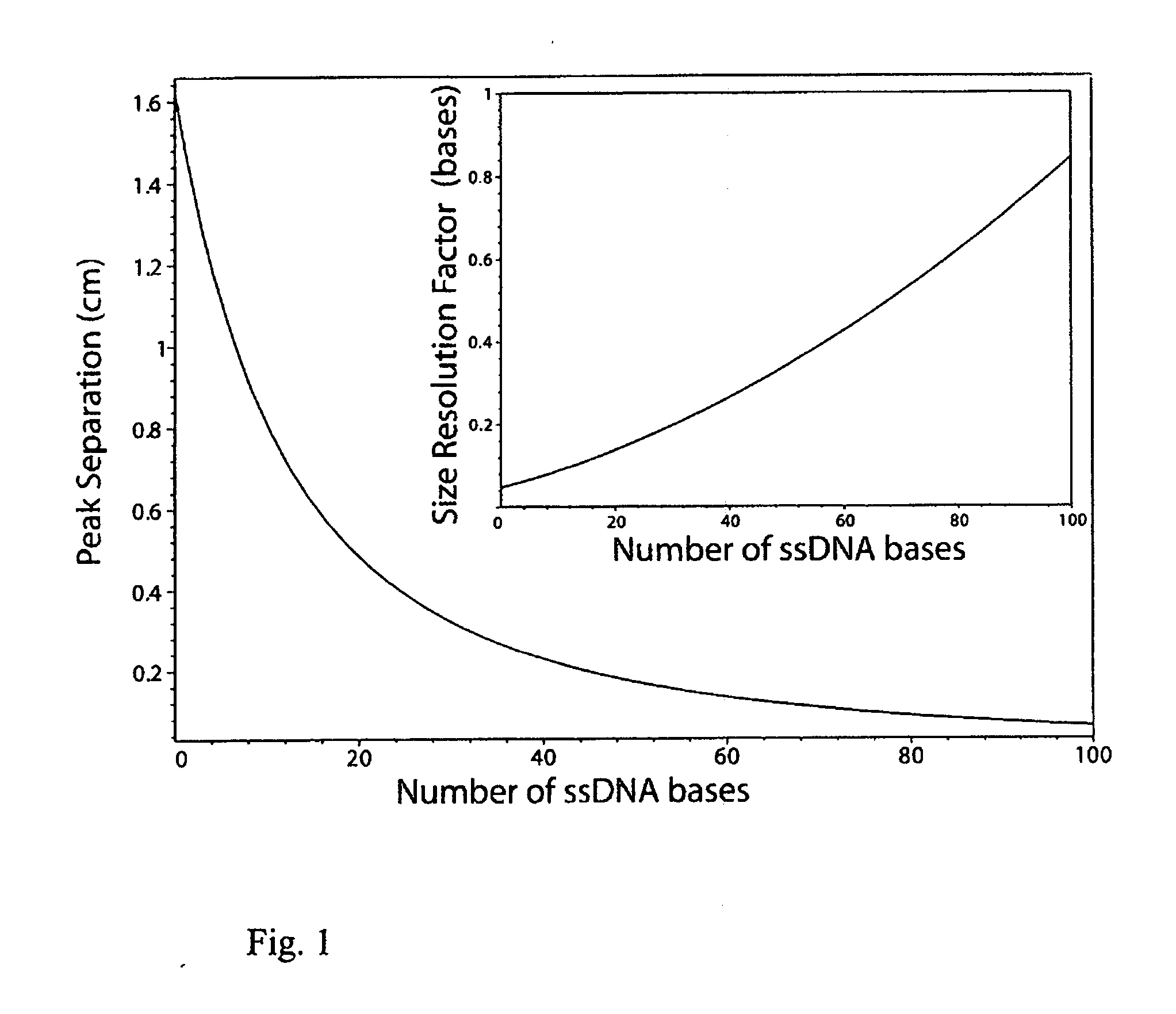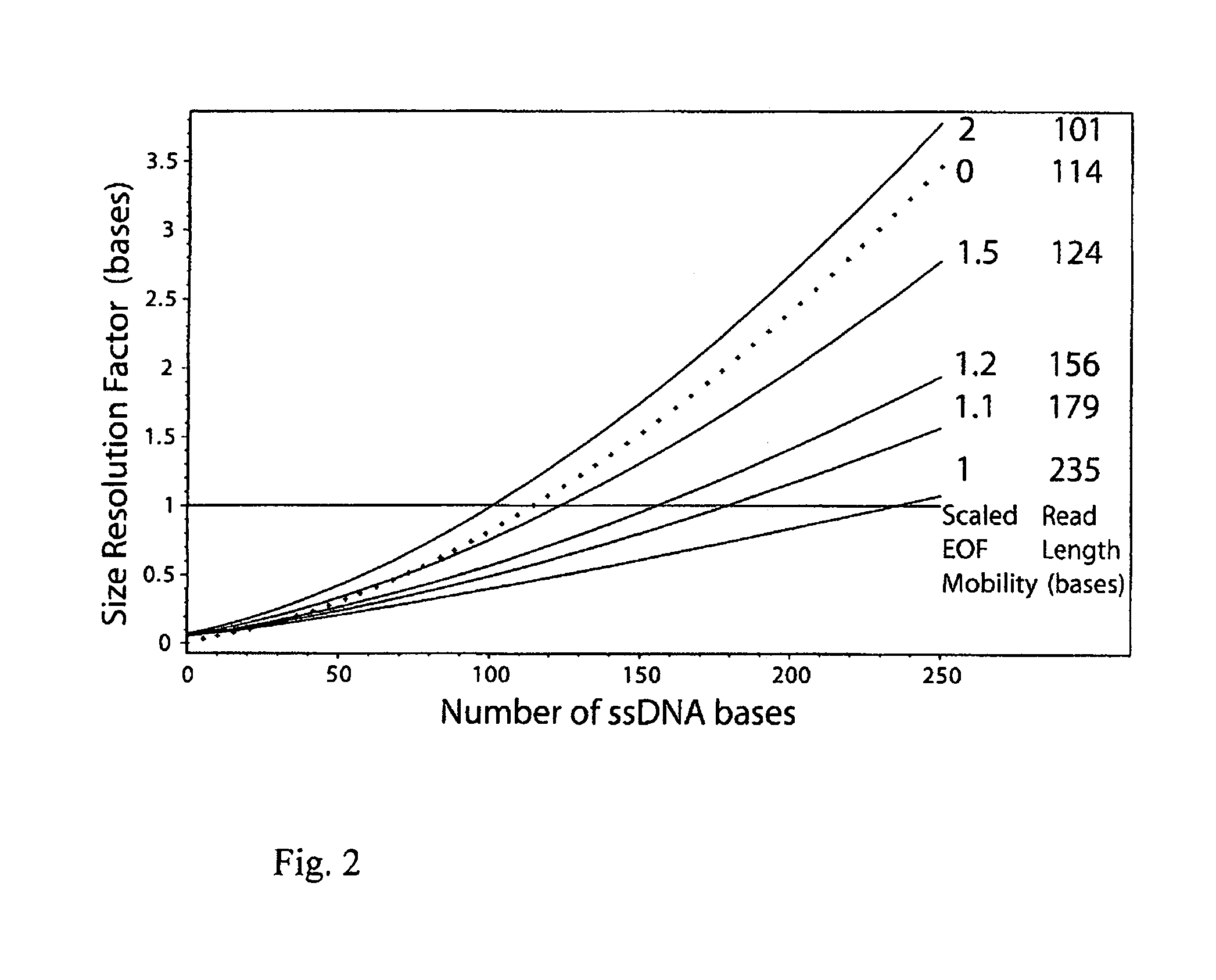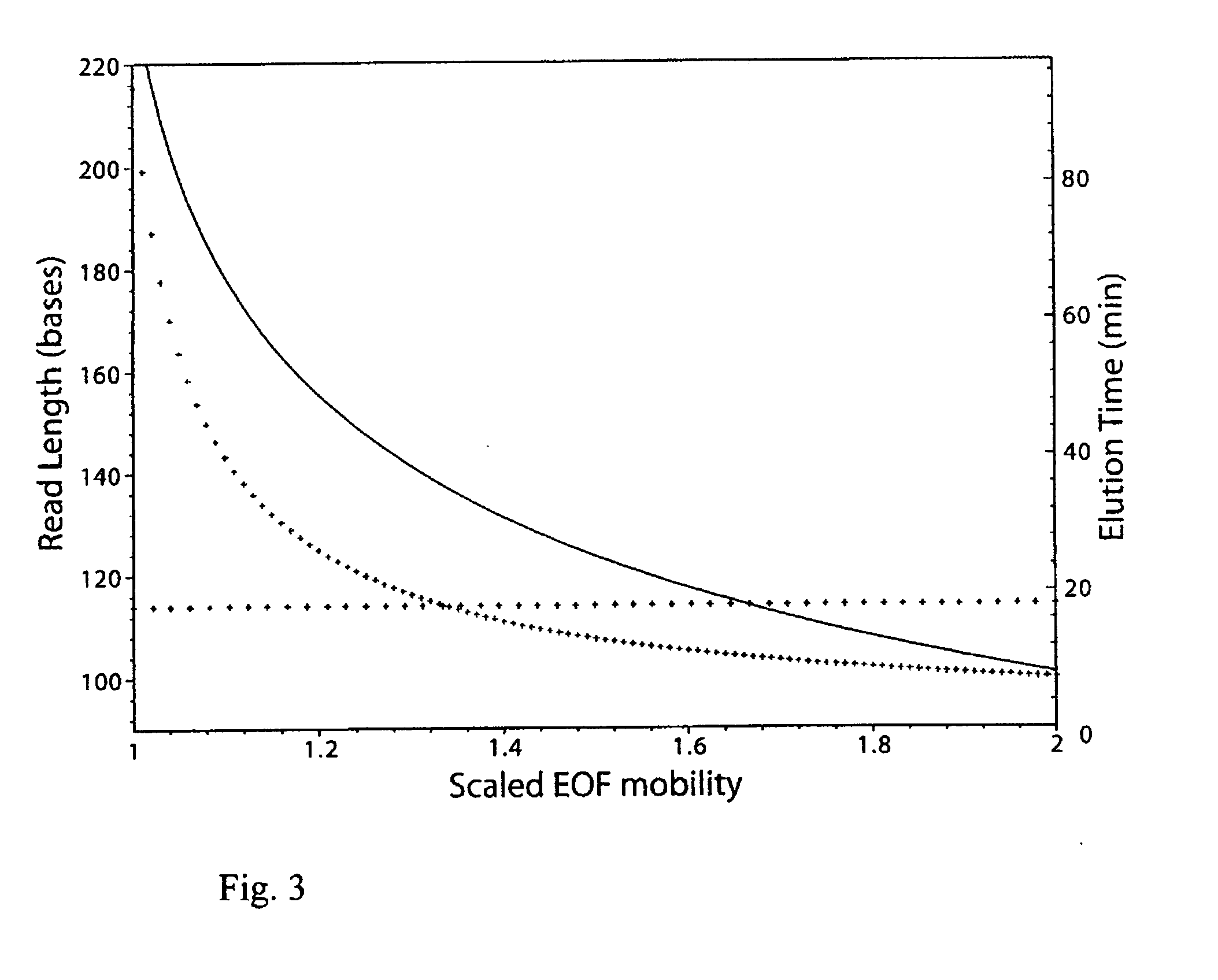Electroosmotic flow for end labelled free solution electrophoresis
a free solution and electrophoresis technology, applied in the field of polymer separation, can solve the problems of increasing the time required for sequencing, limiting the read-length of the dna, and insufficient separation, so as to facilitate the separation of end-labeled ssdnas, the effect of increasing hydrodynamic friction
- Summary
- Abstract
- Description
- Claims
- Application Information
AI Technical Summary
Benefits of technology
Problems solved by technology
Method used
Image
Examples
example 1
ELFSE in the Presence of EOF
[0063] In this example the inventors develop detailed equations governing ELFSE in the presence of EOF, and investigate the predicted electrophoretic behaviour. As previously mentioned, the EOF is assumed to simply add a constant term μEOF to the electrophoretic mobility of the analyte. The EOF results from the negative charges on the inner surface of uncoated fused silica capillary walls which attract positive ions from solution. While the negative charges of the wall are immobile, the positive charges of the thin Debye layer (typically 1-10 nm [16]) neighbouring the surface are free to move and hence once an electric field is applied, they move towards the cathode. Their motion drags the fluid from the bulk solution along with them, creating the plug-like electroosmotic flow. This flow is generally constant and in the opposite direction to the ssDNA conjugate's own mobility μe, such that the net mobility of the analyte is the difference of these two m...
example 2
Electroosmotic Flow Mobility Exceeding the Mobility of All Conjugates: Single Direction of Migration
[0066] Here, the inventors investigate ELFSE in the presence of an EOF mobility μEOF that exceeds the DNA conjugates own proper mobility μe (i.e. the mobility that it would have in the absence of EOF) which has a maximal value of the mobility of unlabeled DNA μ0; hence we are looking at the situation {tilde over (μ)}EOF≧1 where all conjugates travel backwards, carried by the EOF. The predicted size resolution factor Sm(Mc,{tilde over (μ)}EOF) using the experimental parameters of reference [1] is plotted in FIG. 2 for various values of {tilde over (μ)}EOF≧1. One can see clearly that scaled EOF mobilities {tilde over (μ)}EOF close to 1 would provide increasingly better size resolution with DNA size (i.e., smaller and smaller differences in the number of monomers could be resolved) than the same experimental system with no EOF; for {tilde over (μ)}EOF=1, this improvement is expected to...
example 3
Electroosmotic Flow Mobility Less Than the Mobility of the Fastest Conjugate: Two Migration Directions
[0069] In this section the inventors look at the situation where the EOF is small enough ({tilde over (μ)}EOF≦1) that some of the faster conjugates can fight it and migrate forwards, in the same direction as they would in the absence of EOF. Hence there are smaller molecules moving backwards and larger molecules that are fast enough to overcome the EOF moving forwards. In order to detect both sets of molecules, one would require a different experimental set up, such as injection in the middle of the capillary with detection occurring at both ends, or using multiple runs each geared for a specific size range (and direction). For simplicity take the length L from injection to the detector to be the same for both sets of molecules (although different migration lengths might improve the throughput). An EOF mobility μEOF slightly less than that of unlabeled DNA μ0 would be even closer ...
PUM
| Property | Measurement | Unit |
|---|---|---|
| Length | aaaaa | aaaaa |
| Force | aaaaa | aaaaa |
| Capillary wave | aaaaa | aaaaa |
Abstract
Description
Claims
Application Information
 Login to View More
Login to View More - R&D
- Intellectual Property
- Life Sciences
- Materials
- Tech Scout
- Unparalleled Data Quality
- Higher Quality Content
- 60% Fewer Hallucinations
Browse by: Latest US Patents, China's latest patents, Technical Efficacy Thesaurus, Application Domain, Technology Topic, Popular Technical Reports.
© 2025 PatSnap. All rights reserved.Legal|Privacy policy|Modern Slavery Act Transparency Statement|Sitemap|About US| Contact US: help@patsnap.com



